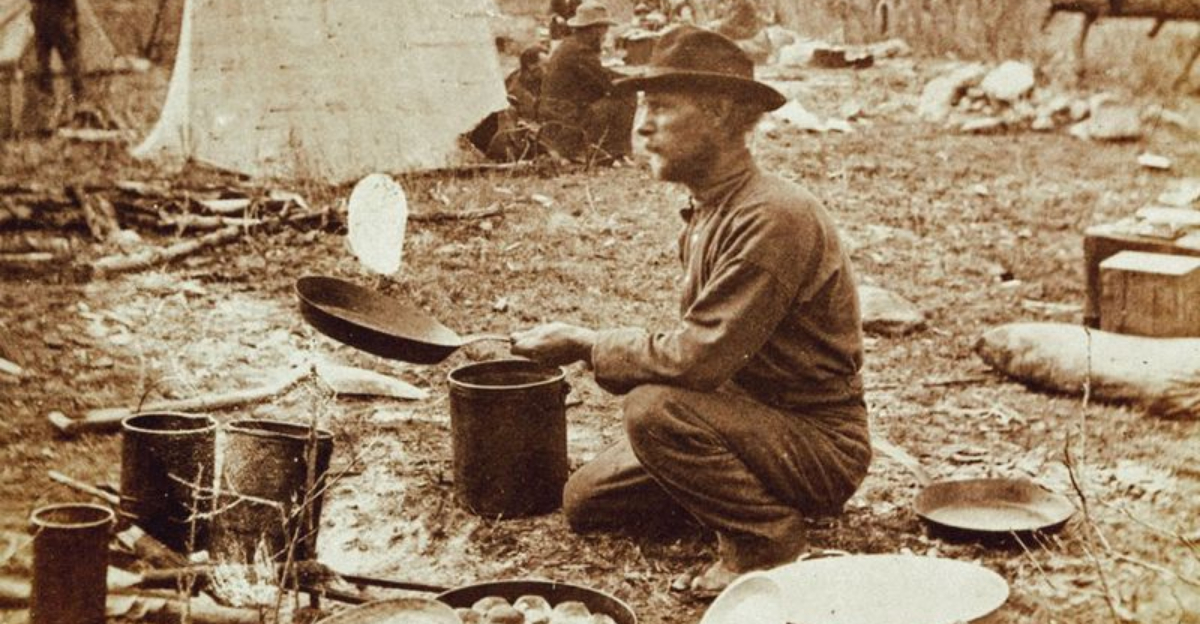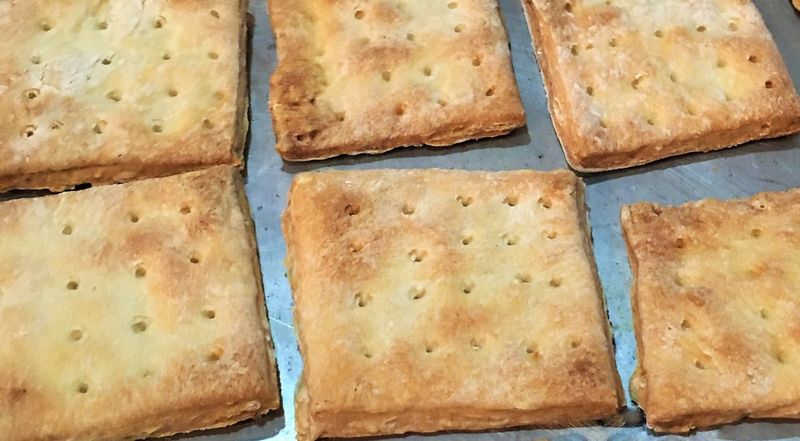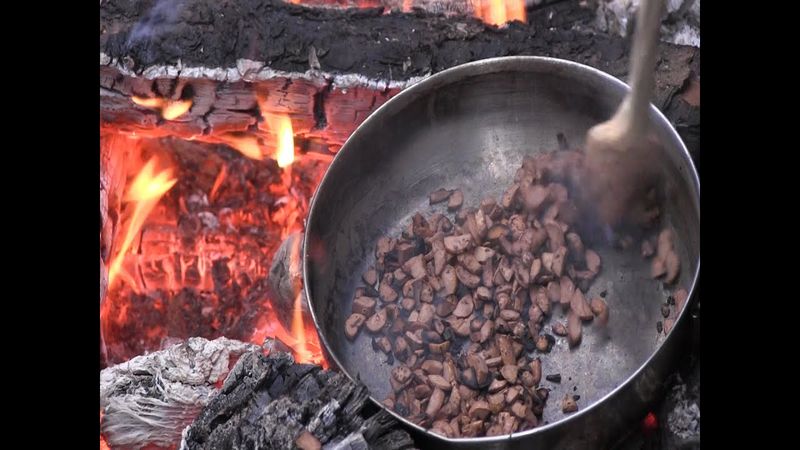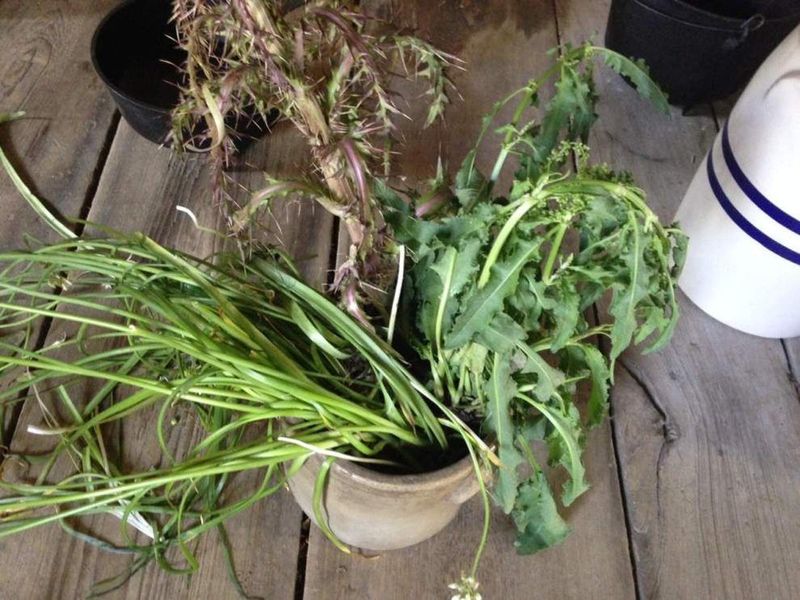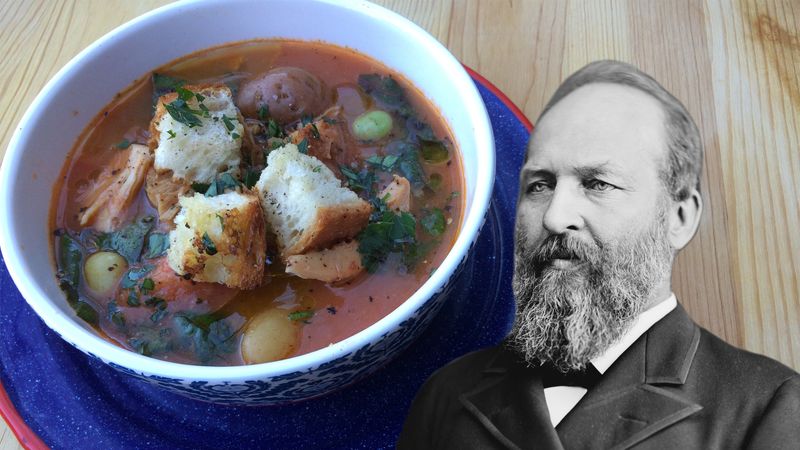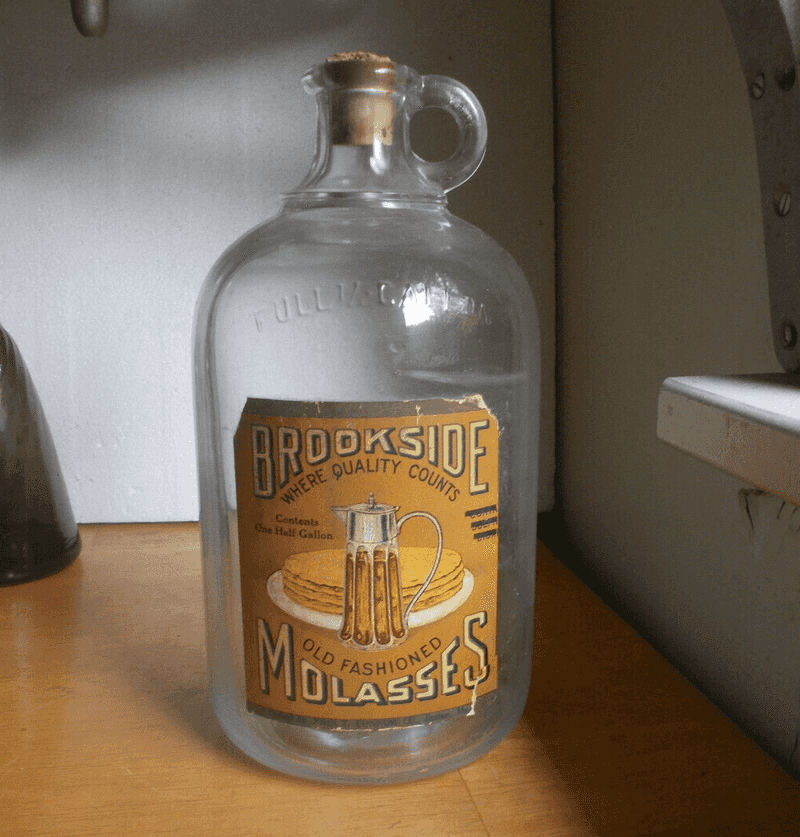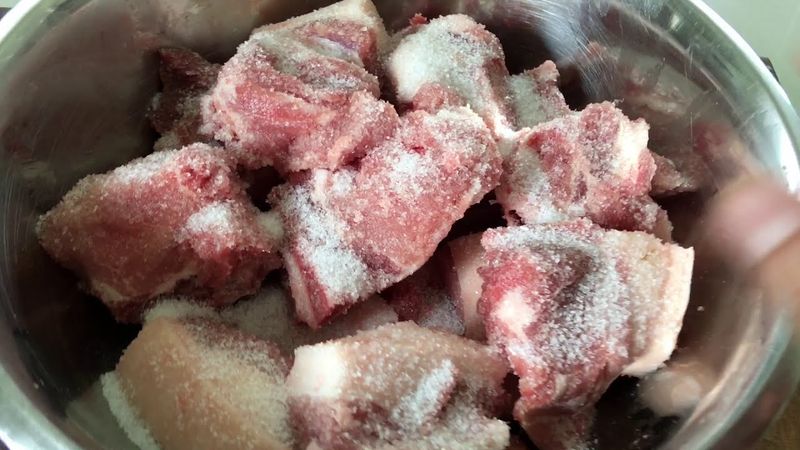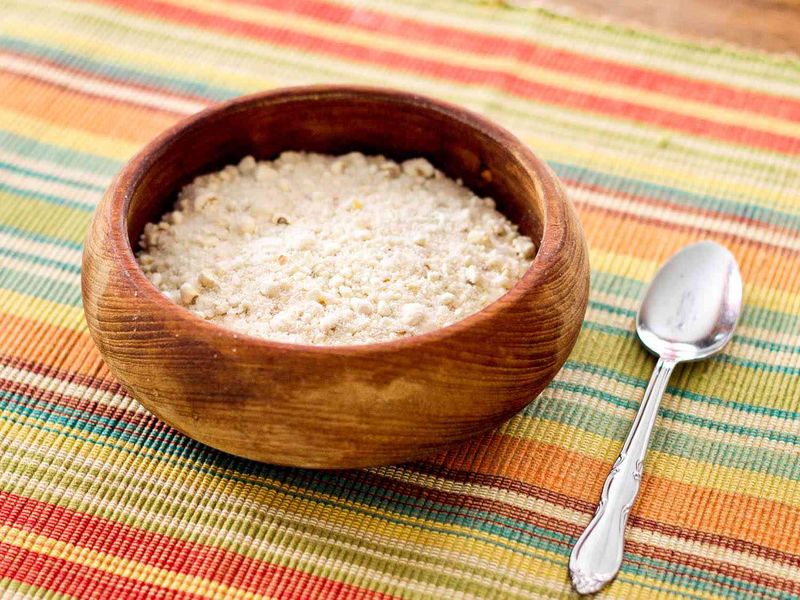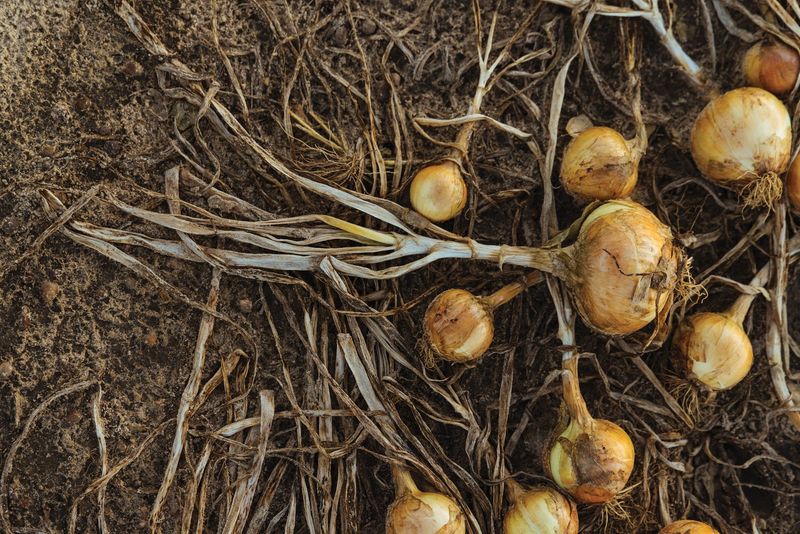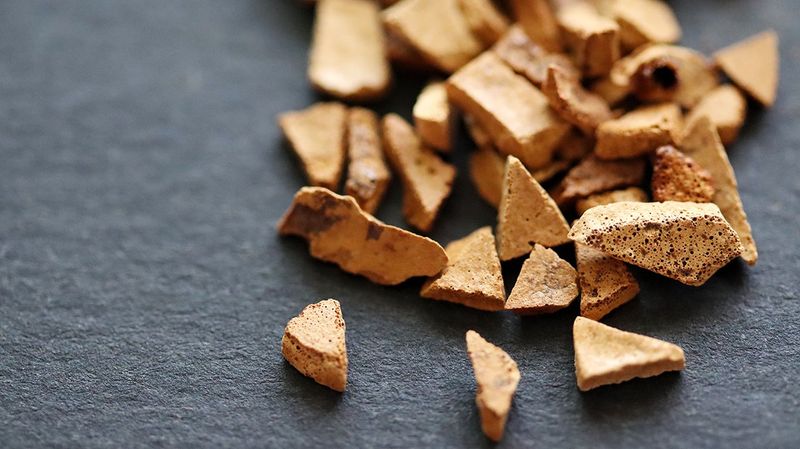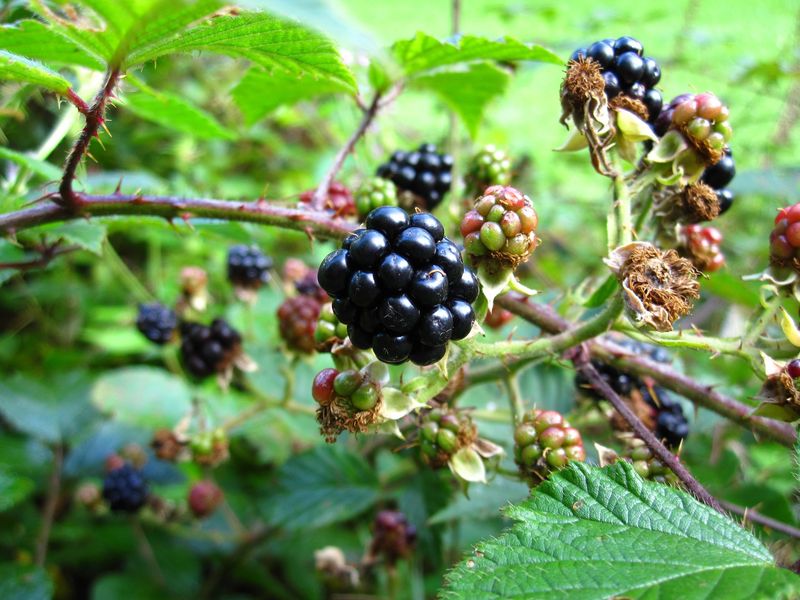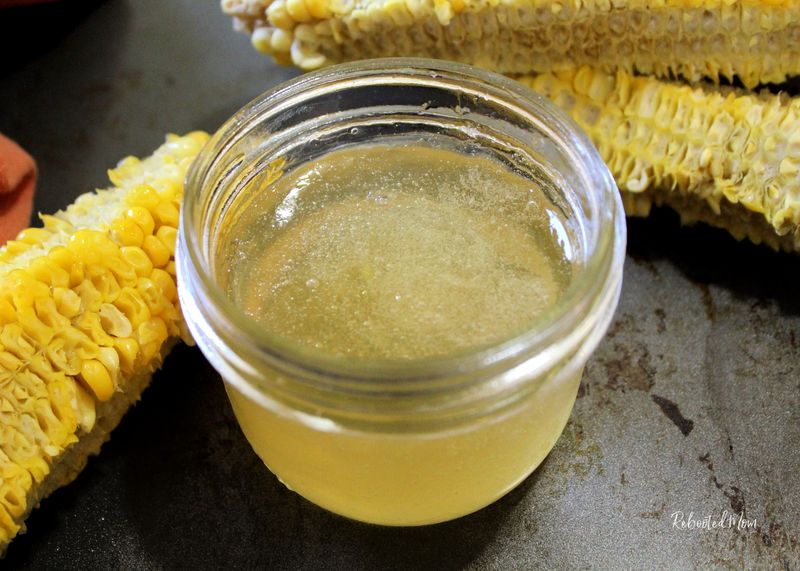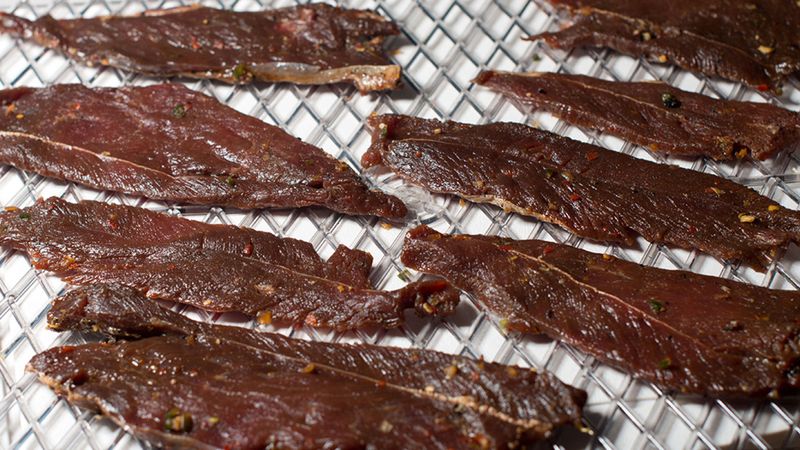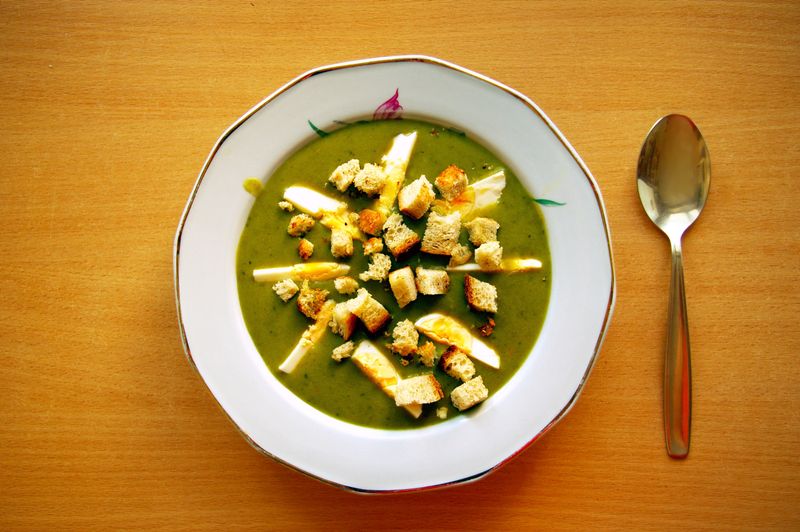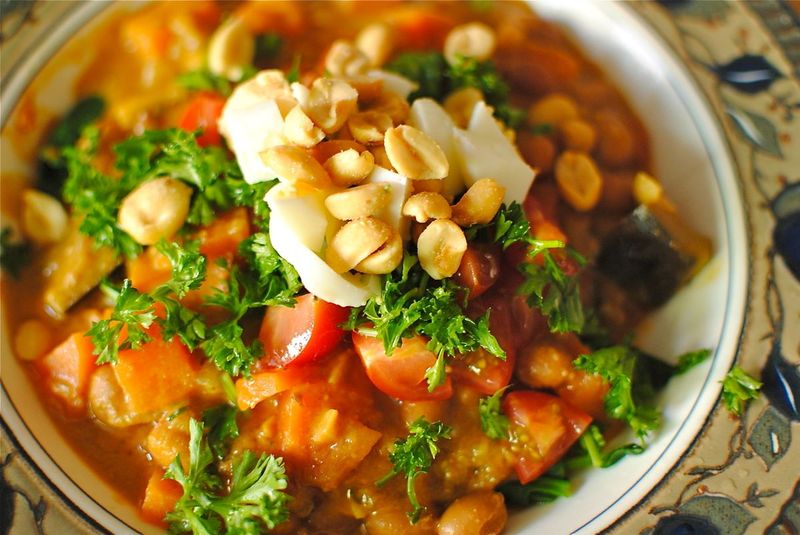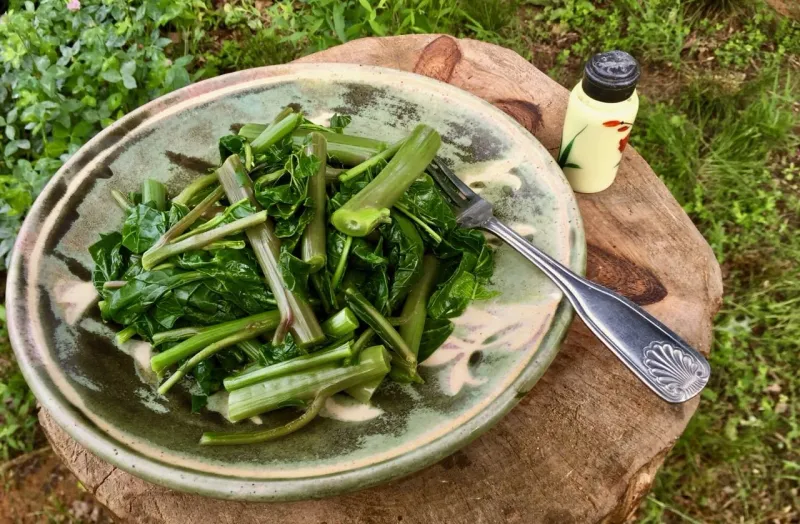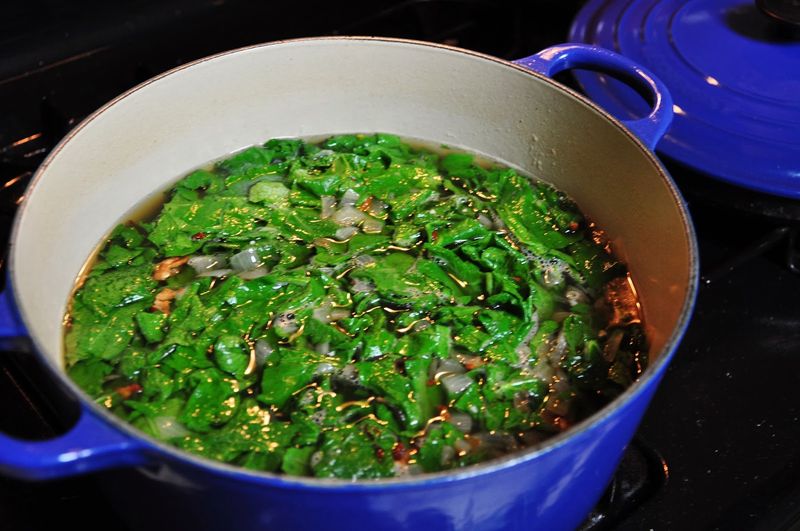The Civil War was a time of great hardship, and the scarcity of supplies pushed people to find unconventional means to survive. With traditional foods often unavailable, those living through the war had to get creative with their diets.
This blog post explores 22 surprising food sources that sustained people during this difficult period. From foraged plants to unusual meat sources, these foods tell a story of resilience and ingenuity.
Each item in the following list reveals a unique aspect of how individuals and communities adapted to the challenges of war.
1. Hardtack
Hardtack, a simple and long-lasting biscuit, was a staple for soldiers during the Civil War. Made from flour, water, and salt, it was often criticized for its hardness. Soldiers would usually soak it in coffee or water to make it edible.
Despite its lack of flavor, hardtack provided necessary sustenance and was easily transported. It symbolized the resourcefulness required to endure the hardships of war.
Though not pleasant to eat, hardtack was crucial for survival, representing a connection to home and a testament to enduring strength. Its simplicity and longevity made it indispensable.
2. Acorn Coffee
During the Civil War, coffee was in short supply, leading to creative substitutes like acorn coffee. Made by roasting and grinding acorns, this beverage offered a caffeine-free alternative.
Though it lacked the familiar coffee kick, its earthy flavor provided comfort to those missing their morning brew. Acorn coffee was a testament to adaptability, as people utilized available resources.
Preparing it involved a meticulous process of shelling, roasting, and grinding, requiring patience and skill. This drink reflects the ingenuity needed to cope with scarcity, turning a humble nut into a comforting ritual.
3. Dandelion Greens
Dandelion greens became a vital source of nutrition during the Civil War. Easily foraged and rich in vitamins, they were a common substitute for leafy vegetables. Picked fresh from fields, these greens were often boiled or sautéed.
Their slightly bitter taste was a small price for the nourishment they provided. Dandelions symbolized resilience, growing abundantly despite adverse conditions. They offered a sense of normalcy, connecting people to the land.
Utilizing wild plants like dandelions was essential for survival, showcasing the ability to adapt and find sustenance in unexpected places.
4. Squirrel Stew
Squirrel stew was a practical meal during the Civil War, providing much-needed protein when other sources were scarce. Hunting squirrels was a common activity, especially in rural areas.
The meat was tender and flavorful, often cooked with whatever vegetables were available. This dish represented the necessity of hunting for survival, utilizing local wildlife to sustain oneself.
Preparing squirrel stew required skill and resourcefulness, turning a small animal into a hearty meal. It embodied the spirit of adaptability, making the most of available resources to endure the challenges of war.
5. Cornbread
Cornbread was a beloved staple during the Civil War, easy to make and highly satisfying. Made from cornmeal, it was a versatile food, often served alongside stews or eaten alone.
Its hearty texture and slightly sweet flavor provided comfort and energy. Cornbread was a symbol of Southern culture and resilience, reflecting the ability to create something nourishing from simple ingredients.
Preparing cornbread was a familiar ritual, offering a sense of normalcy amidst chaos. Its simplicity and adaptability made it a cherished food, representing the tenacity and creativity needed to survive.
6. Molasses Water
Molasses water was a common drink during the Civil War, offering a sweet and energizing alternative when other beverages were scarce. Made by mixing molasses with water, it provided a quick source of energy.
Its rich, dark flavor was both comforting and satisfying. This drink demonstrated the creativity in utilizing available resources, making something enjoyable from what was at hand.
Molasses water was not only a thirst quencher but also a symbol of ingenuity, providing a sense of comfort and normalcy. It showcased the ability to adapt and find joy even in simple things.
7. Salt Pork
Salt pork was a crucial food source during the Civil War, offering a long-lasting and flavorful meat option. Preserved with salt, it was easy to transport and store. Salt pork was often cooked in stews or fried, providing essential fat and protein.
Its salty taste was a reminder of home-cooked meals, bringing warmth and comfort. This preserved meat symbolized the importance of preparation and resourcefulness, enabling survival in harsh conditions.
Salt pork represented a connection to the past, where preservation techniques ensured that nothing went to waste, embodying the spirit of resilience.
8. Parched Corn
Parched corn was a popular snack during the Civil War, easy to carry and highly nutritious. Made by roasting dried corn kernels, it was a convenient food for soldiers and civilians alike.
Its crunchy texture and nutty flavor were both satisfying and energizing. Parched corn symbolized the ingenuity required to make the most of available resources, turning a simple grain into a sustaining snack.
It was often carried in pockets, providing quick nourishment on long marches or during hard work. This humble food highlighted the ability to adapt and thrive even in scarcity.
9. Wild Onions
Wild onions were a vital foraged food during the Civil War, adding flavor and nutrition to meals. Found growing in fields and forests, they were often used in soups and stews. Their pungent taste enhanced simple dishes, making them more palatable.
Foraging wild onions required knowledge of the land and a keen eye, reflecting the essential skills needed for survival.
They symbolized a connection to nature and the ability to find sustenance in the wild. Wild onions brought a sense of comfort and familiarity, a small luxury in a time of scarcity.
10. Chicory Root Coffee
Chicory root coffee was a common substitute for real coffee during the Civil War, as the blockade made traditional coffee scarce. Made by roasting and grinding chicory roots, it offered a rich, slightly bitter flavor.
Though it lacked caffeine, its taste was reminiscent of coffee, providing comfort to those missing their daily brew. Chicory root coffee demonstrated the adaptability and creativity of people, turning a common plant into a beloved beverage.
Preparing it was a meticulous process, requiring patience and skill. This drink reflected the resilience needed to endure the challenges of war.
11. Cattail Roots
Cattail roots were an unexpected food source during the Civil War, providing nutrition and versatility. Found in wetlands, these roots could be boiled or roasted, offering a mild, starchy flavor.
Harvesting cattail roots required knowledge of the land and careful preparation, reflecting a deep connection to nature. They symbolized resourcefulness, turning a common plant into a sustaining meal.
Cattail roots were not only nourishing but also a reminder of the ingenuity required to find food in unexpected places. This humble plant showcased the ability to adapt and thrive even in challenging conditions.
12. Blackberry Syrup
Blackberry syrup was a sweet delight during the Civil War, offering a taste of luxury in difficult times. Made from wild blackberries, it was often used to sweeten foods or as a treat.
Its rich, fruity flavor provided comfort and joy, a reminder of home and family. Blackberry syrup symbolized the creativity in utilizing natural resources, turning wild berries into a cherished condiment.
It was a testament to the ability to find sweetness even in adversity, reflecting the resilience and ingenuity needed to endure the challenges of war. This syrup brought a touch of normalcy.
13. Persimmon Pudding
Persimmon pudding was a special treat during the Civil War, made from ripe persimmons and simple ingredients. Its sweet, rich flavor was a welcome indulgence, providing comfort and satisfaction.
The preparation of persimmon pudding required skill and creativity, turning a common fruit into a beloved dessert. It symbolized the ability to create joy and nourishment from what was available, reflecting the resilience of people during challenging times.
Persimmon pudding was more than just a dessert; it was a reminder of home and family, offering a moment of sweetness amidst the hardships of war.
14. Sweet Potato Coffee
Sweet potato coffee was an inventive beverage during the Civil War, offering a warm and comforting alternative to traditional coffee. Made by roasting and grinding sweet potatoes, it provided a unique, earthy flavor.
Though it lacked caffeine, its rich taste offered comfort to those missing their daily brew. This drink reflected the adaptability and creativity of people, utilizing available resources to create something enjoyable.
Sweet potato coffee was a testament to the ingenuity required to endure scarcity, turning a humble root into a cherished ritual. It provided warmth and familiarity.
15. Corn Cob Jelly
Corn cob jelly was a surprising treat during the Civil War, made by boiling corn cobs and adding sugar. Its sweet, mild flavor offered a taste of luxury in tough times.
This jelly symbolized the creativity in making something delightful from seemingly useless materials. Corn cob jelly was a testament to the resourcefulness and ingenuity needed to find joy amidst scarcity.
It was more than just a condiment; it was a reminder of home and family, bringing sweetness and comfort. This unexpected treat highlighted the ability to create something special from the ordinary.
16. Wild Game Jerky
Wild game jerky was a crucial food during the Civil War, offering a long-lasting and portable source of protein. Made from various wild animals, it was dried and seasoned, providing a flavorful snack.
Hunting and preparing jerky required skill and knowledge, reflecting the essential survival skills of the time. This preserved meat symbolized the necessity of utilizing available resources to sustain oneself.
Wild game jerky was more than just a food; it was a testament to resilience and adaptability, enabling people to endure harsh conditions. Its rich flavor offered a taste of normalcy.
17. Sorrel Soup
Sorrel soup was a common dish during the Civil War, made from wild sorrel leaves. Its tangy, lemony flavor was both refreshing and nourishing. Sorrel was often foraged from fields and forests, requiring knowledge of the land.
This soup symbolized the ability to find sustenance in unexpected places, turning a wild plant into a nourishing meal. Preparing sorrel soup was a reflection of creativity and resourcefulness, making the most of available ingredients.
It offered comfort and familiarity, connecting people to the land and providing a sense of normalcy amidst chaos.
18. Groundnut Stew
Groundnut stew was a nourishing meal during the Civil War, made from wild groundnuts, also known as wild peanuts. These tubers were foraged from forests and fields, providing essential nutrients and energy.
The stew was often cooked with whatever vegetables were available, creating a hearty and satisfying dish. Groundnut stew symbolized the ingenuity required to survive, utilizing local plants to create a sustaining meal.
Preparing it required knowledge of the land and skill in cooking, reflecting a deep connection to nature. This stew offered both nutrition and comfort, embodying resilience.
19. Cattail Pollen Pancakes
Cattail pollen pancakes were an innovative dish during the Civil War, made from the pollen of cattail plants. The pollen was mixed with other available ingredients to create a light, fluffy pancake.
This dish symbolized the creativity needed to find sustenance in unexpected places, turning a common plant into a delightful meal. Preparing cattail pollen pancakes required skill and ingenuity, reflecting the ability to adapt and thrive even in scarcity.
These pancakes offered a taste of normalcy, providing comfort and satisfaction. They were a testament to the resilience and resourcefulness of people.
20. Pokeweed Salad
Pokeweed salad was a foraged delicacy during the Civil War, made from young pokeweed leaves. Though toxic if improperly prepared, careful boiling rendered the leaves safe to eat.
This salad offered a unique flavor, providing nutrition and variety. Foraging and preparing pokeweed required knowledge and caution, symbolizing the essential survival skills of the time.
Pokeweed salad was more than just a meal; it was a testament to the ingenuity and adaptability needed to find food in the wild. It provided a sense of connection to the land and a taste of normalcy.
21. Turnip Greens
Turnip greens were a staple during the Civil War, offering a nutritious and easy-to-grow food source. Rich in vitamins and minerals, they were often cooked with salt pork or boiled alone.
Turnip greens symbolized the ability to create something nourishing from simple ingredients, reflecting the resilience needed to endure hardship. Preparing them was a familiar ritual, providing comfort and a sense of normalcy amidst chaos.
These greens were more than just a side dish; they were a testament to the creativity and resourcefulness required to survive, offering nourishment and satisfaction.
22. Wild Berry Pie
Wild berry pie was a cherished treat during the Civil War, made from foraged berries. Its sweet, tart flavor offered a taste of luxury in tough times.
This pie symbolized the creativity in utilizing natural resources, turning wild fruit into a beloved dessert. Preparing wild berry pie required skill and patience, reflecting the ability to find joy and nourishment in what was available.
It was more than just a dessert; it was a reminder of home and family, bringing sweetness and comfort. This pie highlighted the resilience and ingenuity needed to endure challenges.
